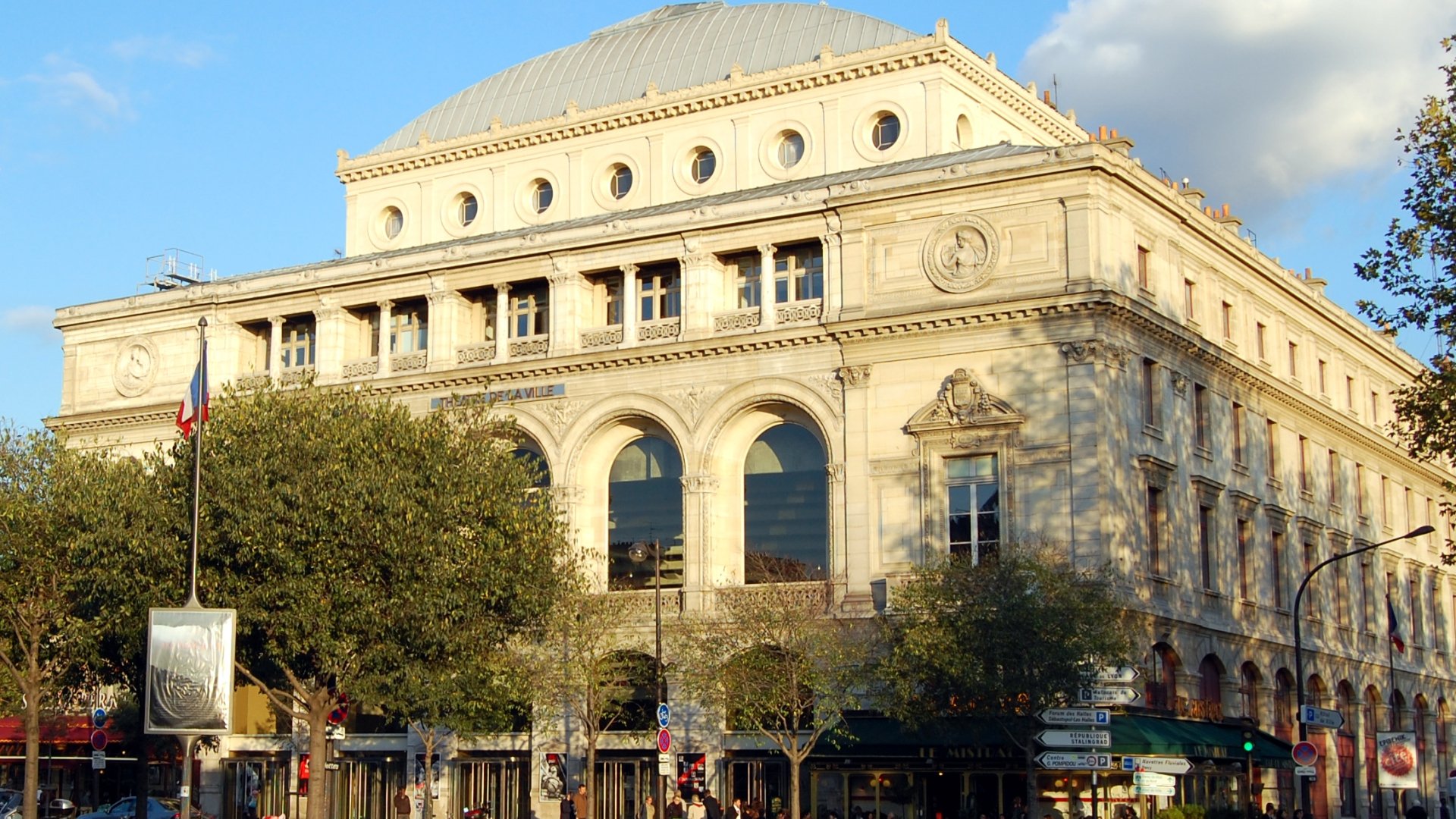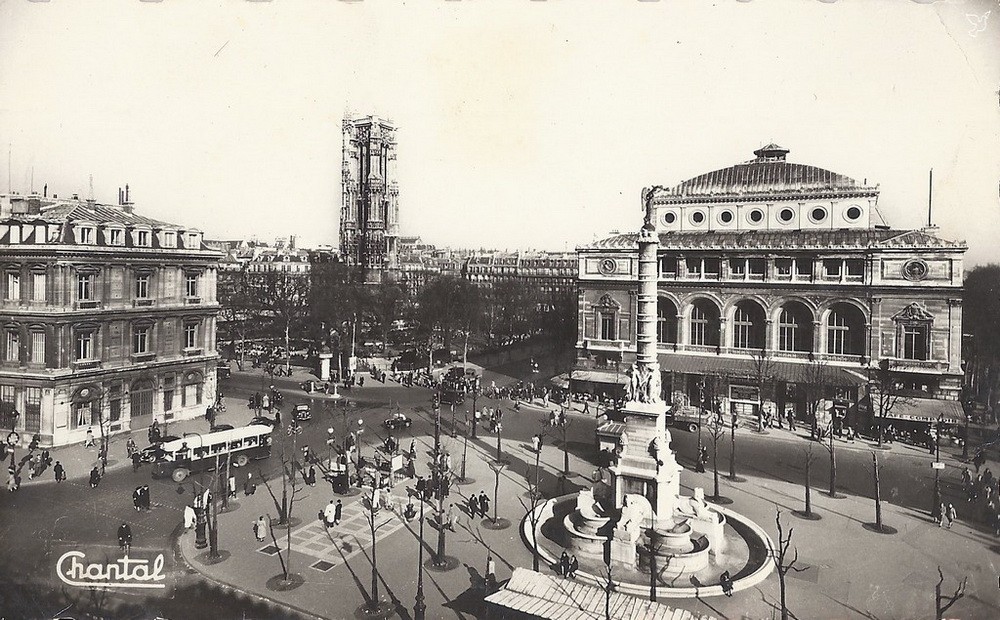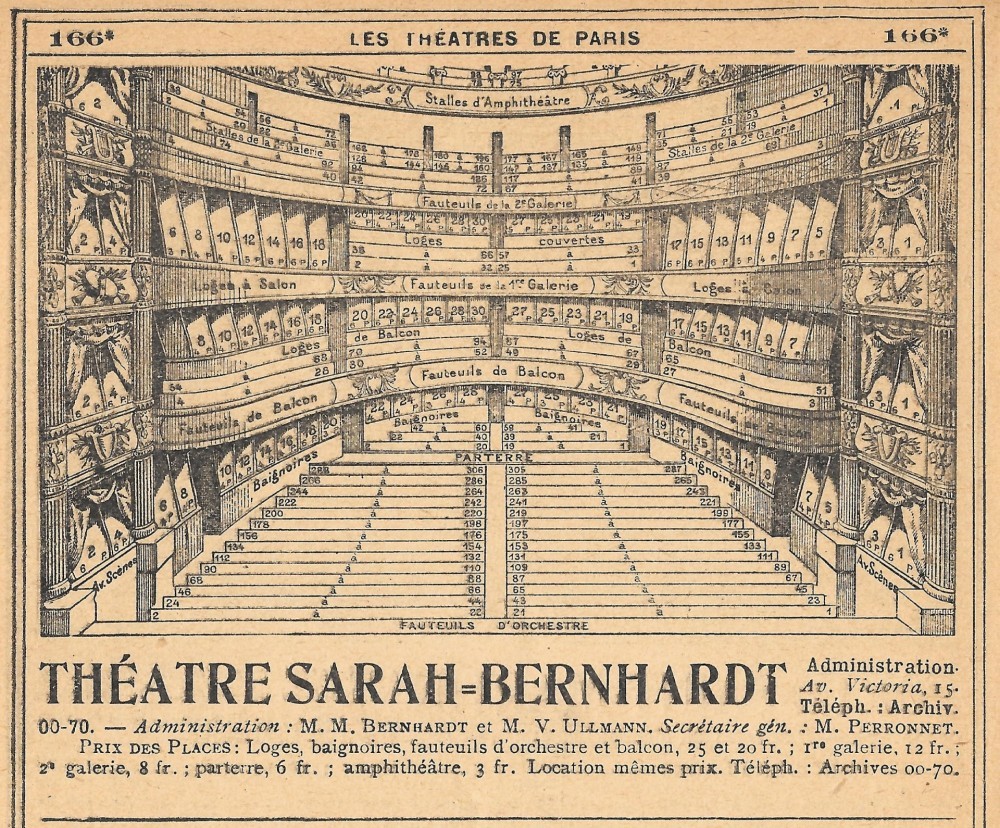Our history

The history of the Théâtre de la Ville – a wonderful epic.
The history of the Théâtre de la Ville is a wonderful epic. The fortified castle built on the site in the early 12th century was demolished in 1802. Next, in 1860, two theaters, designed by Gabriel Davioud the architect and close collaborator of Baron Haussmann, were built; these were the Théâtre du Châtelet and the Théâtre Lyrique. During the Paris Commune, in 1871, the Théâtre Lyrique was destroyed by fire, and when rebuilt in 1875, was named the Théâtre Historique and then the Théâtre de Paris. In 1887, it was used as the theater for the Opéra Comique when the Salle Favart also went up in flames.
In 1899, Sarah Bernhardt took over the theater, named it after herself and undertook major renovations. She ran it with great panache for 24 years, until her death in 1923. When France’s left-wing Popular Front alliance came to power, it became the Théâtre du peuple, but under the German occupation during World War II, theater director Charles Dullin was ordered to change the name to the Théâtre de la Cité.
In 1949, it returned to the name of the Théâtre Sarah Bernhardt, before becoming the Théâtre des Nations, a name bearing a distinctive and prestigious reputation.
In 1966, the City of Paris embarked on major rebuilding works, appointing Valentin Fabre and Jean Perrottet as architects in charge. The only original part left standing was the façade; the proscenium arch stage was destroyed and raked seating in the auditorium offered perfect sightlines for the capacity audience of one thousand. This was the Théâtre Municipal Populaire which then adopted the name it still has today, the Théâtre de la Ville. Stage director Jean Mercure was named director of the theater and developed a vision based on “art in a full range of forms: theater, choreography and music.”
In 1985, he handed over the directorship to the then administrative director Gérard Violette who had been a member of the founding team. Gérard Violette continued and extended Jean Mercure’s approach, inviting guest artists who would become internationally acclaimed names in choreography, and making the Théâtre de la Ville a key venue and beacon in the world of contemporary dance.
During the recent renovations of the Théâtre de la Ville, all the staff and teams have been based at the Espace Cardin which had been restored and upgraded by the City of Paris, work that was a sign of great commitment and solid support and for which I wish to express our recognition and gratitude. While we were settling into our temporary premises, the City of Paris was working with the architects Marie-Agnès Blond and Stéphane Roux for renovations both ambitious and essential to make the Théâtre de la Ville what we believe will be a grand and great theater of the 21st century.
The Théâtre de la Ville is a place we enjoy. It is also an idea, and a thought: the idea of art that can breathe, the thought of encounters that bring inspiration. The Theater is also that moment in time where we recognize others, for it is their home extending a welcome to them, a place of hospitality.
Here words are enjoyed – the sound of words, of languages, even unfamiliar languages. Movements are enjoyed, as are musical effects, realms unknown or unfamiliar and strange repertoire that can be surprising, terrifying, sometimes disturbing, and so often stirs our emotions. Here is a venue for the future, a bridge between the 19th, 20th and 21st centuries.
We have always considered that tributes should be paid to what was done before our time, then follow through while also introducing new inventive approaches. Thus the past is set assertively in the present and ready for the future. There is no doubt about this, and with my passion for dance, I have felt the need to pursue long-term undertakings with choreographers, bringing my commitment to them to support their original works, and as advocate for their repertoire, drawing ever larger audiences.
Maguy Marin, Jérôme Bel, Anne Teresa De Keersmaeker, Boris Charmatz, the Tanztheater Wuppertal-Pina Bausch and so many others have a theater welcoming them here, offering hospitality.
Prodigious talents in world music, names such as Shahram Nazeri, Nusrat Fateh Ali Khan, Chaurasia, Ballaké Sissoko and Homayoun Sakhi, have presented hours of dazzling performances at the Théâtre de la Ville. But I also wanted the scope to embrace other continents, for example, Africa with Andréya Ouamba and Faustin Linyekula, Korea with Eun-Me Ahn, and China with the Tao Dance Theater, and to program Israel Galván, Hofesh Shechter and Dimitris Papaioannou, and the original hip-hop of Wang Ramirez. It is a matter of transcending borders, broadening cultural horizons and practices. I wanted the Théâtre de la Ville to return to part of its heritage from the Théâtre des Nations, to have the theater in a position where once again it could present the dramatic art and languages of the world. As a result, 55 years later, there was the return of the Berliner Ensemble, which had not been seen here since Bertolt Brecht and the famous evening in June 1954. First, in 2009, there was the unforgettable version of The Threepenny Opera directed by Robert Wilson, and then so many major works that shine out in the realms of theater, in Europe and around the world today. The last two productions by our friend Patrice Chéreau were presented here, and now a new relationship has been developed with a younger generation, with Thomas Ostermeier, Ivo Van Hove and Romeo Castellucci, and at one stage (and again quite recently), we have had to defend them, countering the forces that would take us back to the Dark Ages and outlaw such freedom of speech.

